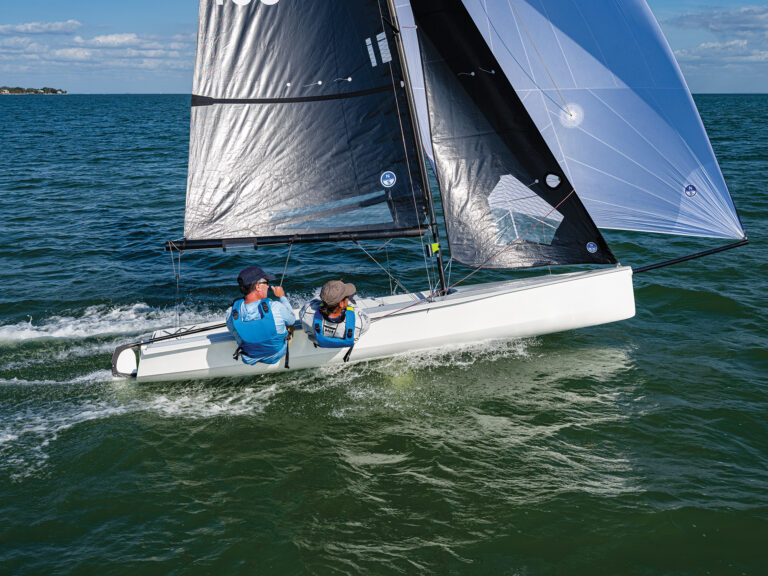Recently a reader wrote to describe why he was selling his PHRF boat and buying a Melges 24 one-design. In the process, he pointed out a key difference between most one-design and PHRF fleets–“the lack of sailing community in PHRF and the fact that it pits everyone against each other.” He described how, when he began to do well, “only one sailor came up to the boat to talk about rig set-up or to encourage me. Instead, the sailors talked about my rating.” The reader went on to contrast that experience with the enthusiasm and encouragement hed received from the sailors in the nearby Melges 24 fleet.
Not all PHRF fleets are cold and unfriendly–far from it–but any handicap-based competition naturally brings to the fore the differences between boats. Because handicaps arent solely based on objective measurements, differences of opinion show up, too. To succeed, PHRF fleets need to soften the rating debates and focus on the systems greatest strength. Because almost any boat can be given a handicap, PHRF racing is our most inclusive and most popular form of competition.
Most successful PHRF fleets emphasize inclusivity and have found ways to keep the ratings process in its place. (Those of you who have a good formula going, Id like to hear about it). But if your fleet is ailing, here are some ideas for emphasizing PHRFs positives to rebuild:
1. Reduce the number of events that count for the season series. These should be the races or regattas that already attract the best sailors in the area, have the best race management, and are perhaps sailed over the fairest courses. Award great trophies and publicize the hell out of the winners–make them your local gods. Then make them pay for the privilege by speaking at clinics and seminars to encourage others to improve.
2. Work with organizers of races outside of the season series to try out a new handicapping system that modifies a boats rating based on the skippers past performance. You could, for example, give percentage penalties to those who placed in the silver recently. Or delay the start a few minutes for those whove won races before. Or alter PHRF handicaps using the SALT system (Sailor Ability Level Table–see http://www.ussailing.org/compelig/salt/). These events should have the best parties. They might be charity events and could be point-to-point races. They could also be the venues for clinics, as mentioned in No. 1.
3. Put together a marketing and communications plan for all of the above, and get key sailors and regatta organizers to buy into the plan. Good ideas alone wont take you far; get the word out and work with the top sailors to balance their desire for pure skills-based racing and any fleets need for more inclusive, less results-oriented racing. Whether or not you use personal handicaps, most sailors will find the experience fulfilling only if you strike that balance.
Nearly 14 years ago, Ian Bruce (the Lasers original builder) described to a US SAILING One-Design Class Council meeting his thesis that it takes top-notch sailors to get a good fleet started, but that the same group is usually responsible for its death. Many one-design classes have taken this advice to heart over the last decade, and PHRF racers should, too. That doesnt mean the best sailors shouldnt tack on each others wind or challenge each others ratings; it just means they must place at least as much importance on the social and educational side as they do on the racing itself.









